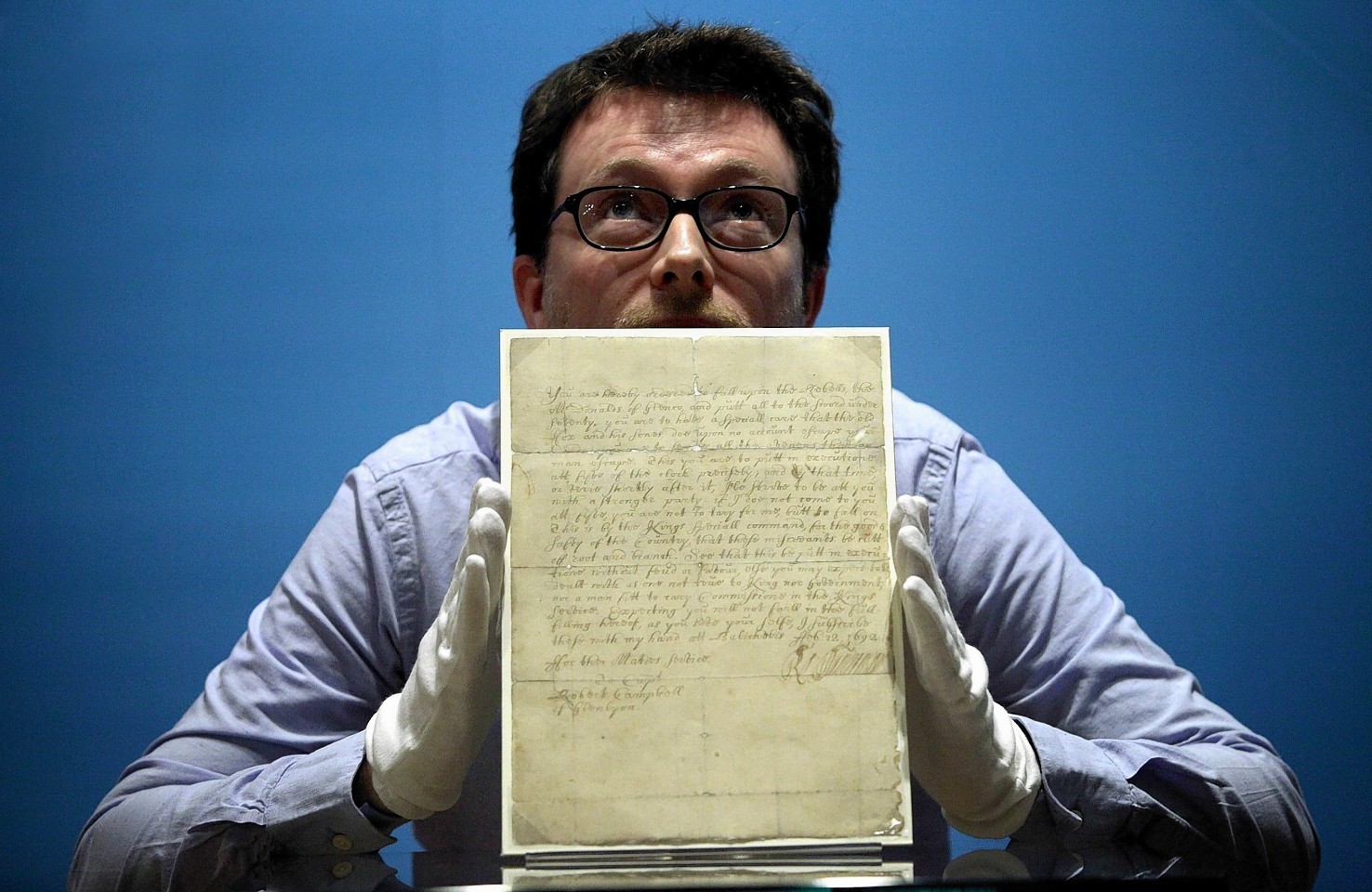One of the most chilling documents in the annals of Scottish history – the handwritten order for the massacre of Glencoe – is a centrepiece of a new exhibition marking the 300th anniversary of the 1715 Jacobite uprising.
On a snowy February day in 1692, Government soldiers who had earlier accepted the clans’ hospitality, slaughtered 38 MacDonalds because of their suspected Jacobite sympathies.
Some 40 women and children later died from exposure in freezing conditions after being burned out of their homes.
This treacherous chapter in a bloody 50-year struggle to re-establish the Stuart monarchy is told in the exhibition Game of Crowns which opens today at the National Library of Scotland in Edinburgh.
It explains a turbulent period of British history and brings alive the dynastic, political and religious wrangling within a network of royal families, fed by the Catholic and Protestant sympathies of the time.
The MacDonalds’ “crime” was that they had been slow to swear allegiance to new Protestant monarchs William and Mary who had deposed the Catholic James VII (James II of England).
The original document from 322 years ago will be on view in the exhibition.
It opens with the simple command: “You are hereby ordered to fall upon the rebells, the MacDonalds of Glenco, and putt all to the sword under seventy.”
“You can’t get much closer to history than this,” said curator Robert Betteridge. “Visitors to the exhibition will be able to see a document that was written over 300 years ago in conditions of absolute secrecy and then passed on to the people who were to carry out the massacre.
“It was a deed so shocking in its execution that it has remained strong in the memory of generations of Scots.”
Large parts of Scotland remained sympathetic to the Jacobite cause in the years after the massacre and the fuse for the uprising was lit in 1714.
Mr Betteridge added: “Most people will know bits and pieces of the history but may be less familiar with the full story.
“Many people may think about it as Jacobite Highlanders against the English but it is much more complicated than that. What we hope to do is paint a picture of what Scotland was like at this time.”
Game of Crowns runs until May 10, 2015. Entry is free.
